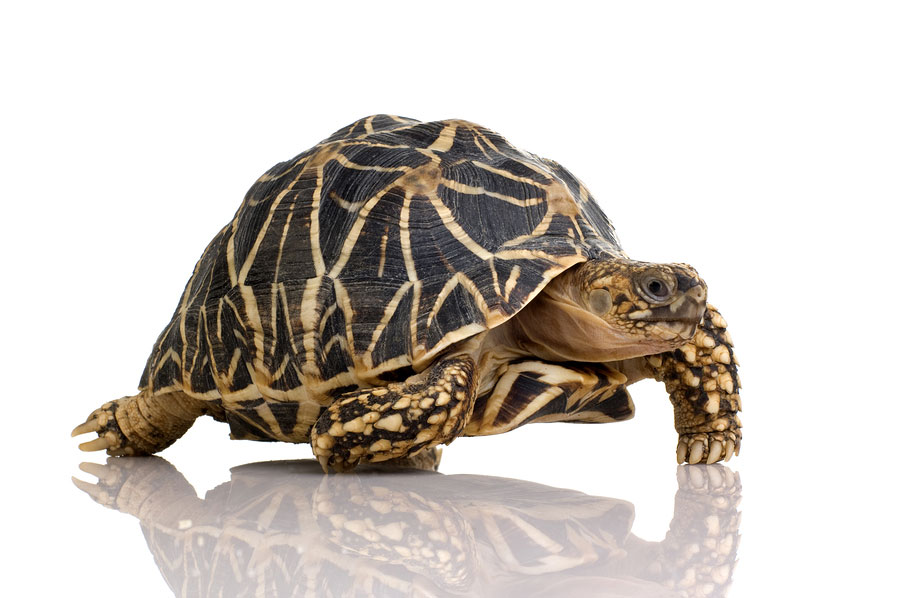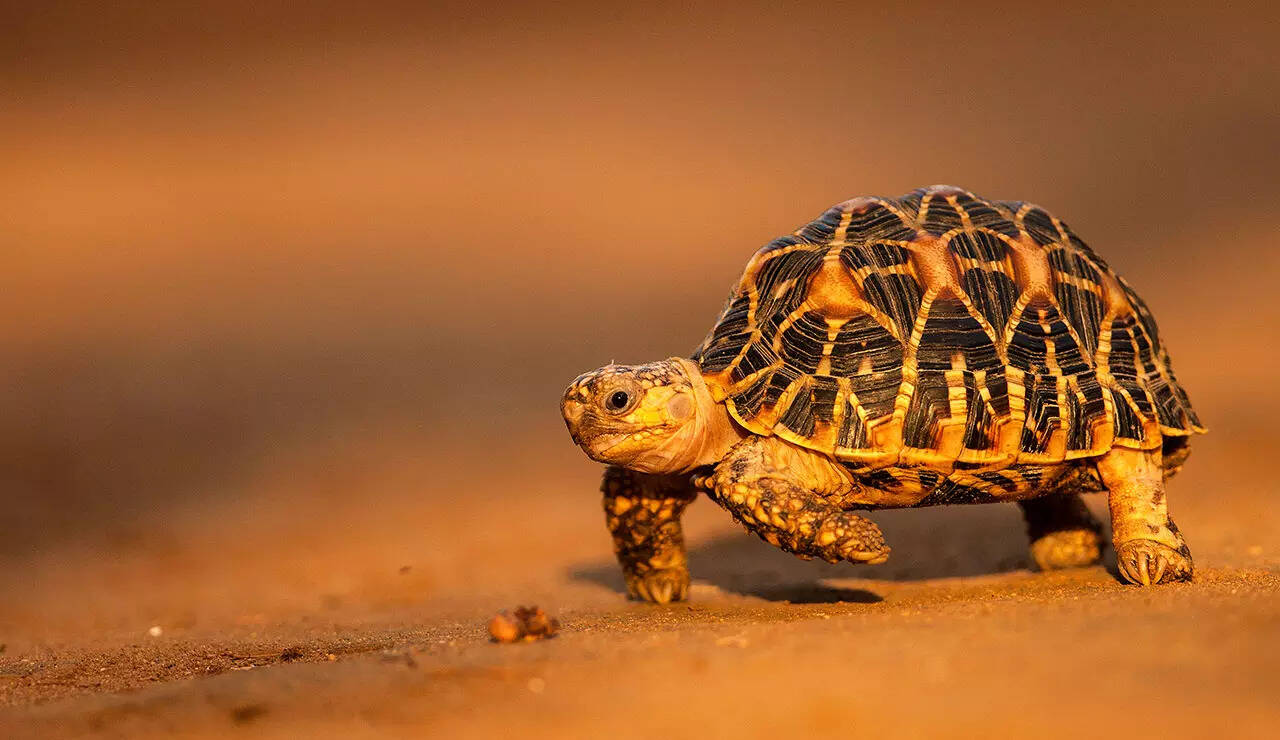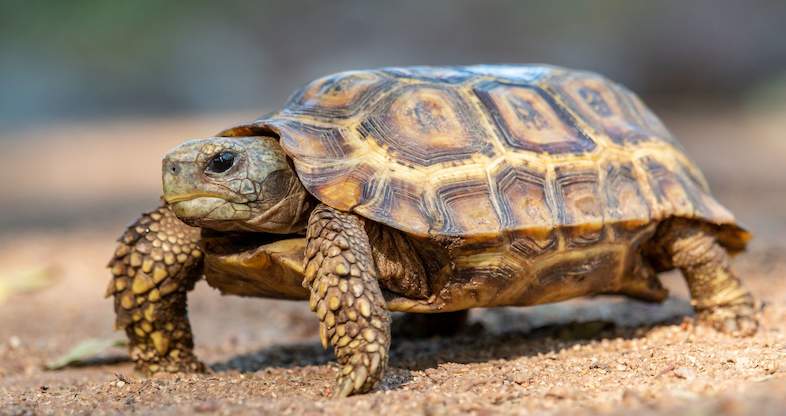Adopting an Indian Star Tortoise: A Beginner’s Guide
A species of turtle that is indigenous to Sri Lanka and India is called the Indian Star Tortoise. It is renowned for the distinct star marks on its carapace (upper shell).
It is a herbivore that consumes grasses, leaves, and fruits. In captivity, it can live for more than 40 years. IUCN has categorized them as “Vulnerable” because of habitat degradation and illegal global commerce. To safeguard this species, conservation measures are in progress.
Is the Indian star tortoise a good pet?
Although the Indian Star Tortoise is a well-liked pet, it needs the right care and supplies to be maintained. It’s crucial to be aware that it’s prohibited to take tortoises out of the wild; instead, you should only buy them from trustworthy breeders.
As a pet, they require a cozy setting, a diverse diet, and a sizable enclosure to allow for proper activity and a high standard of living. It’s also critical to understand the commitment and resources needed to care for a tortoise throughout the course of its existence.
How big does the Indian star tortoise get?
Indian star tortoises typically reach lengths of 12 to 18 inches and weights of 6 to 15 pounds. They can, however, reach lengths of up to 24 inches and weights of more than 20 pounds in some instances.
Can tortoises be a pet?
In fact, Indian Star You can keep tortoises as pets. To avoid breaking the law and perhaps harming wild populations, it’s best to buy them from a reputable breeder rather than taking them out of the wild.
A tortoise needs certain care and supplies to be kept as a pet, including a warm and suitable environment, diverse feed, and a large enough cage to allow for enough exercise and a high standard of living.
How much is an Indian star tortoise worth?
Depending on the tortoise’s age, size, and country of origin, the price of an Indian Star Tortoise can vary significantly. They often range in price from $500 to $3000 or more.
It’s crucial to keep in mind that the cost of buying a tortoise is only the beginning, as providing a tortoise with the right housing and care can be costly, including veterinarian services, a suitable enclosure, food, and other costs.
Is the tortoise lucky for home?
Tortoises are regarded as being lucky and prosperous animals in various cultures. Tortoises are thought to lend a calm and harmonious aura to an area and are frequently connected with stability and long life.
These practices and beliefs, however, vary greatly and are influenced by culture and individual views. In the end, whether or not a tortoise is regarded as lucky depends on one’s own beliefs and opinions.
Are star tortoises poisonous?
There is no poison in turtles. They are safe to keep as pets because they do not hurt people or other animals.
They are not advised as a pet for small children or anyone who cannot care for them, though, as they need a particular diet, a warm atmosphere, and an enclosure big enough to allow for enough activity and a high standard of living.
Can Indian star tortoise eat fruits?
Fruits are a permitted part of the diet of Indian Star Tortoise. They are herbivores and consume grasses, leaves, and fruits in addition to some flowers and succulent plants in their natural diet.
A tortoise’s balanced diet should mostly consist of grasses and a range of dark, leafy greens, including collard, mustard, and turnip greens, with some fruits and other plant-based meals. To keep the tortoise’s shell healthy, it’s also crucial to offer a calcium source, such as cuttlebone.
Can star tortoise see at night?
It’s unknown if Indian Star Tortoises have a nocturnal vision. Tortoises, on the other hand, are nocturnal animals, meaning they sleep at night and are active during the day.
They can see colors and have decent vision in bright light, but their night vision might not be as good as it is during the day. Tortoises rely on their sense of touch and other senses, such as smell, to discover food at night.
What should I feed my star tortoise?
Indian Star Tortoises are herbivores and require a diet that is high in fiber and low in fat and protein. A good diet for a tortoise should consist of:
- Dark, leafy greens: collard greens, mustard greens, turnip greens, and dandelion greens, among others.
- Grasses: Timothy hay, orchard grass, and bermudagrass, among others.
- Fruits: In limited quantities, such as berries, melons, and apples.
- Vegetables: Squash, carrots, bell peppers, and sweet potatoes, among others.
- Supplements: A source of calcium, such as cuttlebone, should be provided to maintain the health of the tortoise’s shell.
Indian star tortoise lifespan
An Indian Star Tortoise can live up to 80 years or longer in captivity with the right care, therefore its lifespan can be quite long. They might live less time in the wild because of things like sickness, predators, and habitat degradation.
It’s crucial to provide your tortoise with the right care, including a balanced diet, a warm and adequate environment, and frequent veterinary check-ups, to ensure a long and healthy life. The longevity of tortoises is determined by a variety of factors, including genetics, diet, and environment.
Are Indian star tortoise endangered?
The Indian Star Tortoise is a species that is at risk of extinction. The International Union for Conservation of Nature (IUCN) has designated it as “Vulnerable” because of habitat degradation, overexploitation, and the pet trade.
Native to the dry areas of India and Sri Lanka, the Indian Star Tortoise is endangered due to deforestation and the conversion of natural habitats into agricultural lands.
The Indian Star Tortoise is also widely used as a pet, and illegal hunting, collecting, and trafficking have all contributed to the species’ population reduction. To assist maintain and conserve this species and its populations, conservation activities are in progress.
These include breeding programs, habitat protection, and regulations governing the pet trade. Additionally, it’s critical to exercise caution when getting a tortoise as a pet and to confirm that it was obtained in a morally and legally responsible manner to prevent encouraging the illegal trade in endangered species.

:max_bytes(150000):strip_icc()/Indianstartortoise-GettyImages-158473585-590f87235f9b586470b20633.jpg)





